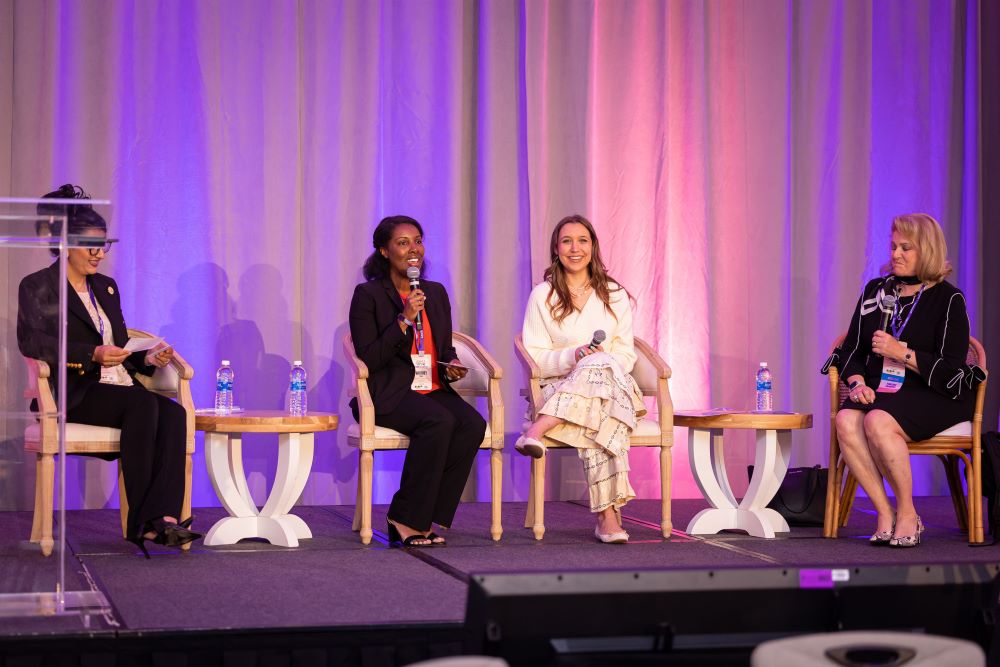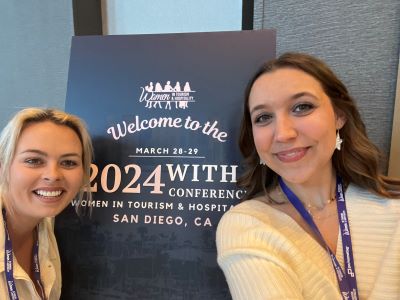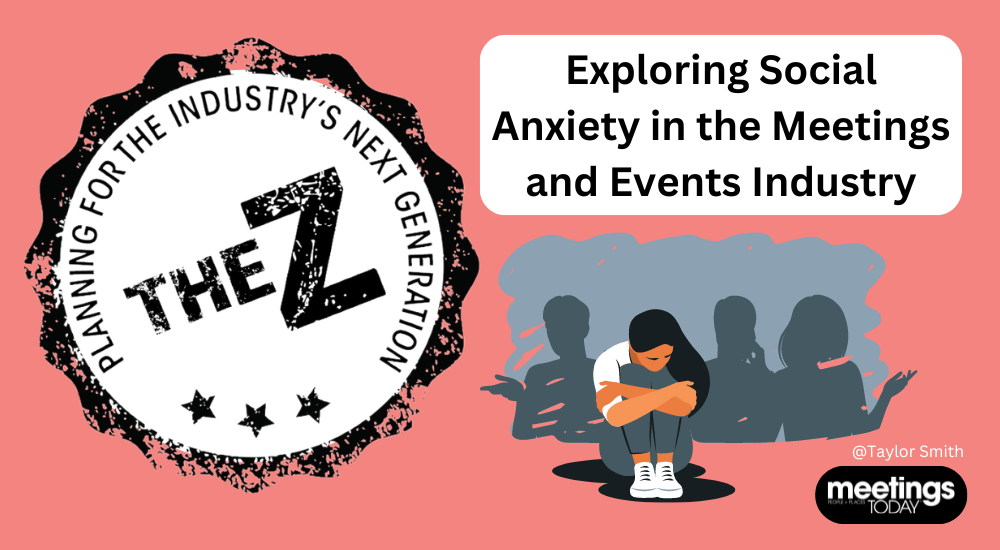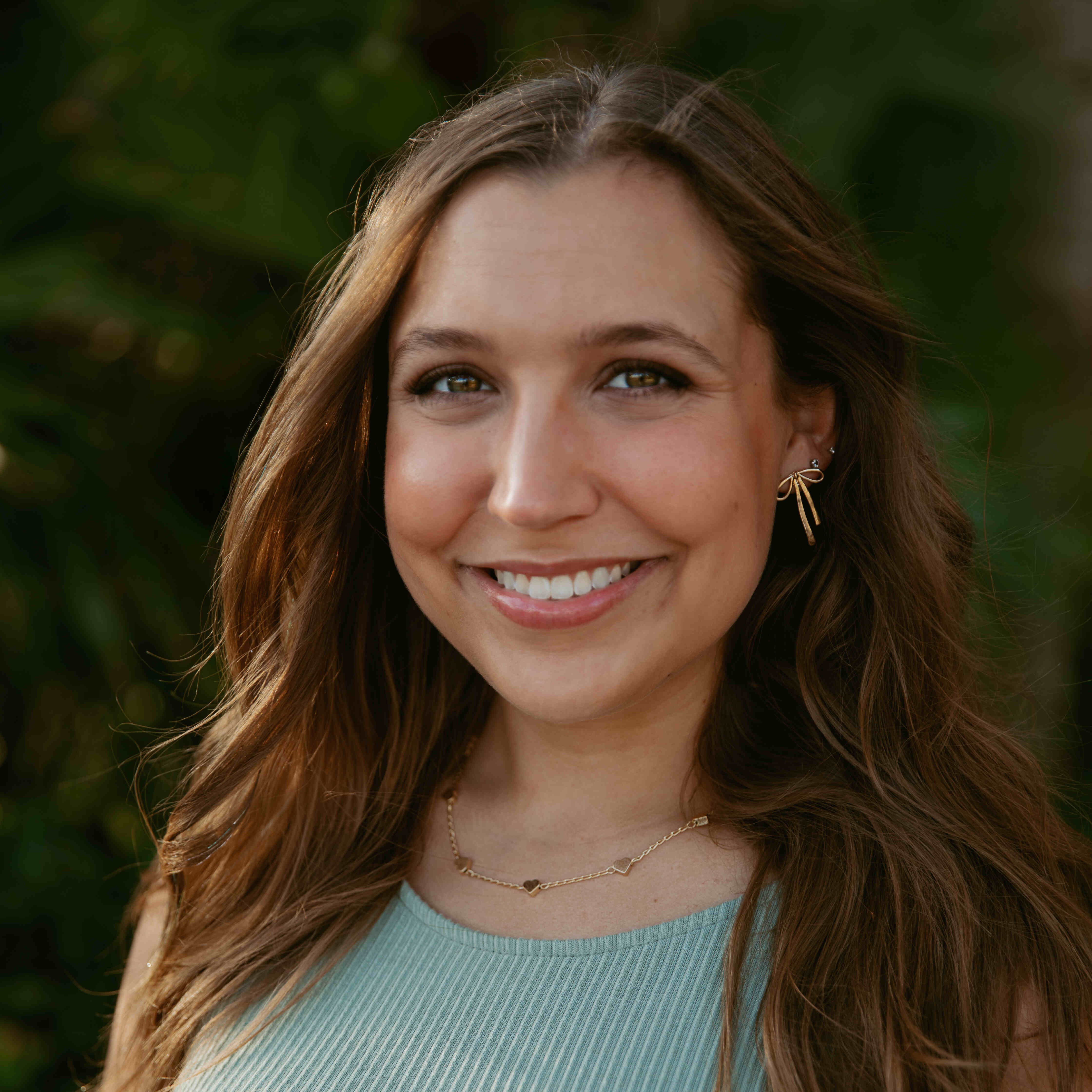I used to get anxious calling restaurants to order food for delivery.
As an introvert with social anxiety, which is defined by the National Institute of Mental Health (NIMH) as “an intense, persistent fear of being watched and judged by others,” basic day-to-day social interactions used to fill me with irrational stress, fear, self-consciousness and embarrassment. (The judgmental voice in my head reminds me that sometimes, they still do.)
Things like asking/answering questions in class, talking to a cashier in a store or telling the Starbucks barista that she made my order wrong would cause so much anxiety, I’d rather just suck it up and drink the 2% milk.
So, you can probably imagine how I felt attending my first meetings industry event nearly two years ago, with dozens of professionals and not a single familiar face in the crowd—overwhelmed, underqualified, intimidated and, to be honest, slightly terrified.
For a little while, I found myself wondering if this highly social industry was the right place for a socially anxious person like me.
But this year, near the end of March, I got up on stage and spoke in front of an audience of nearly 300 people at the Women in Tourism & Hospitality Conference in San Diego—and I loved every second of it.
That experience doesn’t mean my social anxiety is cured now, though. Instead, it means I’ve found a safe place in the meetings and events industry that’s made me less afraid of being my authentic self in social settings. (Thank you, meetings industry professionals, for accepting me for who I am—sparkly hair and all.)
[Related: Celebrating Female Leaders at the Women in Tourism and Hospitality National Conference]

Why Understanding Social Anxiety Matters in Meetings and Events
Meeting planners have lots of superpowers, but if I had to name one that is more super than all the others, it’d be the power to make people feel safe coming to an event as who they truly are. My generation typically refers to this feeling as “belonging.”
At the first few work-related events I attended, I experienced a ton of social anxiety, and according to last year’s Kahoot! ZetaPulse Gen Z Workforce Study, these feelings are common across my generation. In fact, nine in 10 Gen Z employees surveyed reported experiencing social discomfort or anxiety in work settings, with more than half saying they feel it at least half the time.

And while Gen Z may be a bit more open about their run-ins with social anxiety, every generation experiences it. According to the NIMH, an estimated 7.1% of U.S. adults, or approximately 15 million people, had social anxiety in the past year.
I frequent that list of people, but the more industry events I attend, the more I realize that the things I thought people would judge me for saying, doing or wearing are actually the things people find the most interesting about me. They’re the things that make people remember me.
Meeting other people who accepted—and appreciated—those things about me helped me start accepting those things about myself, too. (And stop caring if others don’t!)
Creating a sense of belonging and a safe place for people to be themselves at events can go beyond helping people accept others to also helping people accept themselves.
The more comfortable your attendees feel in their own skin, the more likely they are to engage with your event, network with other attendees and leave with positive memories of what they experienced (rather than overthink their outfit and what they said to that one other attendee). And like me, they may even leave with a little more self-confidence.
Now, I’m not afraid to speak in front of hundreds of people in my frilly, paisley-patterned pants. I actually really enjoy being able to do so.
[Related: The Z: Things I Didn’t Learn About Work Life in College]
Planning with Socially Anxious Attendees in Mind
Social anxiety looks different for everyone who experiences it. Not only do symptoms and severity vary, but so do everyone’s stories.
According to Mayo Clinic, several factors can increase someone’s risk of developing social anxiety disorder, including family history; negative experiences like teasing, bullying, rejection or humiliation; temperament and shyness; new social or work demands; having an appearance or condition that draws attention; and more.

For many Gen Zers with social anxiety, technology is majorly to blame. Texting took over calling people on the phone, and now, face-to-face conversations feel intimidating because we don’t have time to think about what we want to say before hitting “send.”
Many of us missed out on two years of important social development thanks to the pandemic and virtual learning, and social media also made it possible to share our unpopular opinions while hiding behind a screen and avoiding any serious confrontation. (Those online trolls have never been brave enough to say it to my face!)
The reality is that social anxiety has always been around, but because of Gen Z’s shared experiences and the rise of technology—and an increase in mental health conversations and diagnoses—it’s now becoming more prevalent.
There’s no way to know who, if any, of your attendees experience social anxiety, but there’s almost a guarantee that at least one of them does. Refrain from assuming which attendee that may be and picking them out of the crowd, and instead focus on creating an event experience that makes it hard to tell because everyone belongs.
[Related: The Neu Project Champions More-Neuroinclusive Events]
Belonging at MPI’s 2024 World Education Congress
One event that I think is keeping the socially anxious attendee in mind is this year’s MPI World Education Congress (WEC), taking place May 20-22 in Louisville. (Shameless plug: You should come to my session, “OK, Zoomer!” from 2-3 p.m. on Monday, May 20 in room M104 at the Kentucky International Convention Center!)
In late March, I received an email from the JabberYak team on behalf of MPI saying the association had partnered with the event technology company to create a unique icebreaker button for MPI WEC.

By wearing it at the conference, my personalized button will enable me to share seven of my interests with others to break the ice and initiate conversations, all without the awkward small talk that comes with introducing myself to another attendee and trying to find something we both have in common besides meetings and events.
The email from JabberYak instructed me to follow three simple steps: Click the link below to order, choose seven words that best reflect who I am and pick up my button when I check in at MPI WEC. After creating my button, I received a confirmation email that read, “But wait! Do you want to know who else has the exact same interests as you do at this event?” (Duh. Obviously, I do.)
By logging into JabberYak’s ConnectNOW app, I can generate a list of registered MPI WEC attendees that have at least one of my seven interests in common with me, see their names and titles and even send them a message directly from the app to connect with them ahead of the event.
Offering a tool like this and an opportunity for attendees to connect with each other beforehand can be incredibly beneficial for those with social anxiety, helping them make friends pre-event. This connection may help them feel less alone or intimidated when they arrive, and more comfortable introducing themselves to new people and building new industry connections.
[Related: The Z: Interactive Strategies for Engaging Gen Z Attendees This New Year]
Moving Forward With Mental Health at Meetings and Events
Addressing things like mental health and neurodiversity in the meetings industry is a relatively new task on planners’ to-do lists. Mental health in the workplace, in general, is still a relatively new conversation many of us are having.
What makes this area of our industry a bit easier to navigate is how we can do so together, and what we can learn from each other along the way.
By being open-minded and accepting of the reality of having social anxiety in our social industry, we can plan events that are more inclusive and accommodating for those whose social batteries may not have as strong a charge as others—and maybe even help them charge their batteries a bit more.
Holding space for those individuals may be the exact type of reassurance they need to know that who they are is exactly who we want them to be as our attendees, and that no matter who that person may be, there’s always a place for them.
Logging out with love,
Taylor
Have a question about Gen Z or a topic you’d like to learn more about? Share your thoughts with Taylor at taylor.smith@meetingstoday.com, on Instagram at @tay__writes or on X at @taywrites.
Mission Statement: "The Z: Planning for the Industry’s Next Generation" is a Meetings Today column discussing the meetings and events industry’s newest and youngest members—the incoming Generation Z. Written by Meetings Today’s Taylor Smith, a member of Gen Z herself, The Z explores how to welcome, work with, understand and plan for the industry’s next wave of professionals while serving as a guide for members of Gen Z themselves, planners and attendees alike.
Read more from "The Z: Planning for the Industry’s Next Generation."







